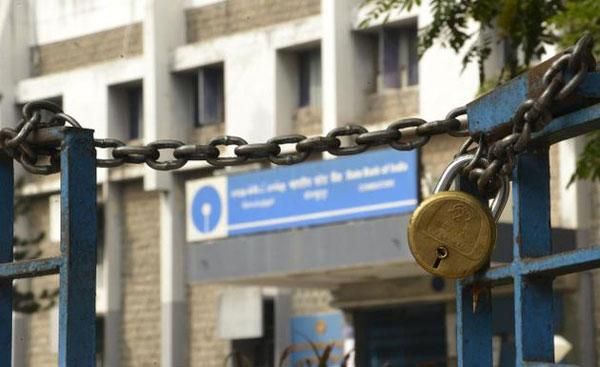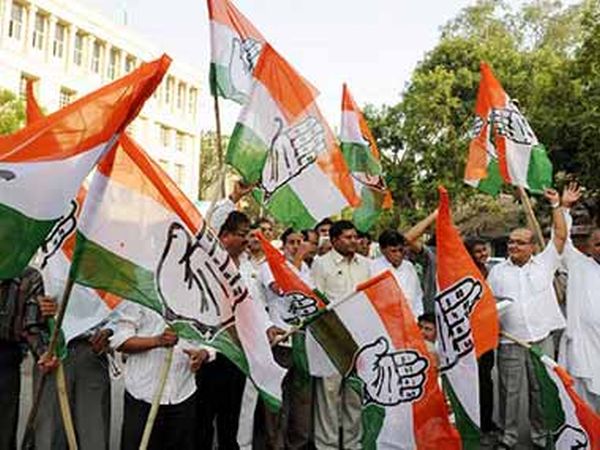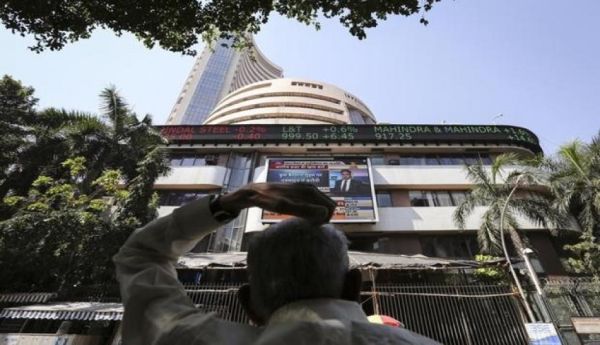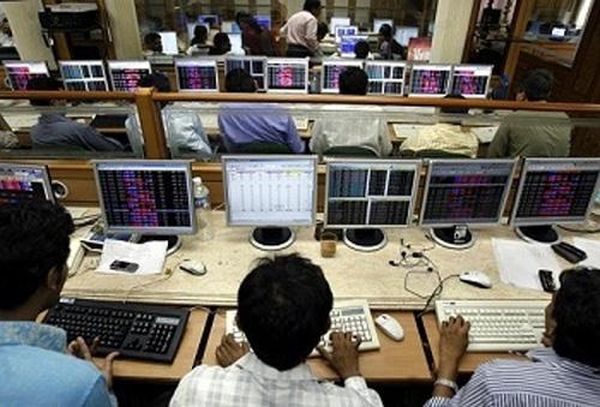
by Editor | May 25, 2021 | Banking, Corporate, Corporate finance, Economy, Finance, Markets, News
 New Delhi : Gross non-performing assets (NPA) in Indian banks are expected to rise to Rs 9.5 lakh crore by March, from Rs 8 lakh crore in March last year, said a ASSOCHAM-Crisil joint study.
New Delhi : Gross non-performing assets (NPA) in Indian banks are expected to rise to Rs 9.5 lakh crore by March, from Rs 8 lakh crore in March last year, said a ASSOCHAM-Crisil joint study.
Stressed assets in March 2018 are expected to be at Rs 11.5 lakh crore, the report titled “ARCs headed for a structural shift,” said.
“High level of stressed assets in the banking system provides enormous opportunity size for asset reconstruction companies (ARCs) which are an important stakeholder in the NPA resolution process,” ASSOCHAM said in a statement quoting the study.
It, however, said that owing to capital constraints, growth of ARCs is expected to come down significantly.
“While growth is expected to fall to around 12 per cent until June 2019, however the AUM (assets under management) are expected to reach Rs 1 lakh crore, and that is fairly sizeable.”
The study added that with banks expected to make higher provisioning over and above the provisions made for stressed assets, they may sell the assets at lower discounts, thus increasing the capital requirement.
The study also said that effective implementation of the Insolvency and Bankruptcy Code would be a remedy to the challenge of prolonged litigation and it can help improve the recovery rate of stressed assets’ industry further.
Power, metal and construction sectors contribute the bulk of stressed assets. According to an analysis of 50 stressed assets (forming nearly 40 per cent of stressed assets in the system), sectors like metal, construction and power form nearly 30 per cent, 25 per cent and 15 per cent respectively, while other sectors together form the remaining 30 per cent.
The report stated that 2018 would see a structural shift in the stressed assets’ space as increased stringency in banks’ provisioning norms for investments in security receipts (SRs) is likely to result in more cash purchases.
“Fiscal 2018 marks beginning of third phase of ARCs which promises to change the landscape as new regulations and other changes kick-in.”
—IANS

by Editor | May 25, 2021 | Banking, Economy, News, Politics
 New Delhi : The Congress on Thursday hit back at Prime Minister Narendra Modi on his charge that banks were forced to give loans to select industrialists during UPA rule, saying bad loans increased in his regime.
New Delhi : The Congress on Thursday hit back at Prime Minister Narendra Modi on his charge that banks were forced to give loans to select industrialists during UPA rule, saying bad loans increased in his regime.
The Congress also demanded a probe by independent agencies into the issue.
“Yesterday (Wednesday) Modiji said that NPA is the biggest scam. We agree with it but we want to know who gave birth to it,” Congress spokesperson Randeep Singh Surjewala told reporters here.
Attacking the Modi government, Surjewala said: “When the Congress lost power in 2014, as per the Reserve Bank of India (RBI), gross NPA of public sector banks in 2013-14 was Rs 2,27,264 crore.
“And as per PIB (Press Information Bureau) press release dated October 24, 2017, this has increased in June 2017 to Rs 7,33,137 crore,” he said. “The NPA in 42 months of Modi government increased by Rs 5,05,873 crore.”
He said the gross NPAs of scheduled commercial banks in 2013-14 was Rs 2,63,372 crore.
“And as per the rating agency CARE, gross NPAs of scheduled commercial banks has increased to Rs 8,29,338 crore. Thus, in 42 months of Modi government, it has increased by 5,65,966 crore,” he said.
Surjewala also said that under Modi government, a total of Rs 1,88,287 crore loans of the industrialists were waived off.
“In 2014-15, the NDA government waived loans of Rs 49,018 crore, in 2015-16 it waived off Rs 57,586 crore of loans and in 2016-17 it waived off Rs 81,683 crore loans of industrialists,” he said.
“If he described NPA as the biggest scam, he should then answer why is such a big scam happening under his nose?” the Congress leader asked.
“The Prime Minister must also tell as to why has his government waived loans of wilful defaulters worth Rs 1,88,287 crore in the last three years?”
He dared the government to order a probe by independent agencies into the same.
On Wednesday, Modi attacked his predecessor Manmohan Singh and the UPA government, saying some of its “people” had forced banks to lend to some industrialists, which he described as the “biggest scam”, bigger than the 2G, coal and Commonwealth Games scams.
—IANS

by Editor | May 25, 2021 | Economy, Markets, News
 Mumbai : Samvat 2074, marking the start of the Hindu New Year on Thursday, saw both key indices of the Indian equities markets recede as rise in geo-political tensions in the Korean peninsula along with fears of higher non-performing asset (NPA) levels of the domestic banking sector eroded investors’ risk-taking appetite.
Mumbai : Samvat 2074, marking the start of the Hindu New Year on Thursday, saw both key indices of the Indian equities markets recede as rise in geo-political tensions in the Korean peninsula along with fears of higher non-performing asset (NPA) levels of the domestic banking sector eroded investors’ risk-taking appetite.
The hour-long session is held every year on Diwali to mark the start of the Hindu New Year.
According to market observers, the special session to mark Samvat 2074, witnessed heavy selling pressure in the banking, metals, auto and oil and gas stocks.
The Nifty 50 of the National Stock Exchange (NSE) receded by 74.95 points or 0.73 per cent to 10,135.90 points.
Similarly, the 30-scrip sensitive index (Sensex) of the BSE plunged during the intra-session trade.
The S&P BSE Sensex, which opened at 32,656.75 points, traded at 32,373.98 points (at 7.15 p.m) — down 210.37 points or 0.65 per cent from Wednesday’s close at 32,584.35 points.
The Sensex touched a high of 32,663.06 points and a low of 32,341.10 points during the intra-session trade.
In Samvat 2073, the barometer index (BSE Sensex) had gained 4,654 points or 16.6 per cent whereas the NSE Nifty 50 had risen by 1,585 points or 18.4 per cent.
“In line with the festive mood the key indices opened higher but soon pared their gains,” Deepak Jasani, Head – Retail Research, HDFC Securities, told IANS.
“Gains in telecom shares were offset by losses in banking sector stocks and metal stocks,” he said, adding that investors continued to be worried over an expected rise in the slippages and NPA levels.
“Samvat 2074 opened on a flat and then plunged into the red, following global trends, as tension have risen once again between North Korea and the US,” Dhruv Desai, Director and Chief Operating Officer of Tradebulls, told IANS.
On Wednesday, a massive sell-off in the banking sector stocks had pulled the key Indian equity indices lower. The 30-scrip Sensex had closed 24.81 points or 0.08 per cent lower and the Nifty 50 closed 23.60 points or 0.23 per cent down.
The special trading session held every year on Diwali is considered to be auspicious for stock market trading. It is believed that the “Muhurat” trading on this day brings wealth and prosperity throughout the year.
This ritual has been observed for ages by the trading community.
—IANS

by Editor | May 25, 2021 | Banking, Economy, Markets, News
 Mumbai : A massive sell-off in banking sector stocks over fears of rising non-performing asset (NPA) levels pulled the key Indian equity indices lower on Wednesday.
Mumbai : A massive sell-off in banking sector stocks over fears of rising non-performing asset (NPA) levels pulled the key Indian equity indices lower on Wednesday.
According to market observers, heavy selling pressure in the banking, healthcare and consumer durables stocks, along with profit bookings eroded investors’ risk-taking appetite.
The 30-scrip Sensitive Index (Sensex) closed 24.81 points or 0.08 per cent lower during the day’s trade.
Similarly, the wider 50-scrip Nifty of the National Stock Exchange (NSE) closed on a negative note. It inched down by 23.60 points or 0.23 per cent to close at 10,210.85 points.
The Sensex of the BSE, which opened at 32,518.56 points, closed at 32,584.35 points, lower by 24.81 points or 0.08 per cent from Tuesday’s close at 32,609.16 points.
The Sensex touched a high of 32,670.32 points and a low of 32,462.85 points during the intra-day trade.
“Markets ended with modest losses on Wednesday ahead of a long Diwali weekend though volumes were higher. A bounce from the lows of the day helped to curb the losses,” Deepak Jasani, Head – Retail Research, HDFC Securities, told IANS.
“Major Asian markets have ended on a mixed note. European indices like FTSE 100, CAC 40 and DAX traded higher. Technically, while the Nifty has taken a breather, the underlying trend remains up. Further upsides are likely once the immediate resistance of 10,236 points is taken out. Weakness could emerge if the supports of 10,176 points is broken.”
According to Dhruv Desai, Director and Chief Operating Officer of Tradebulls, investors’ fear of rising banking sector NPAs dragged the NSE Nifty lower on Wednesday.
“The NSE Nifty edged lower on Wednesday, retreating from record highs hit in the previous three sessions after a rise in bad loans at Axis Bank sparked concerns about the recovery of stressed assets in the country’s banking sector,” Dhruv Desai, Director and Chief Operating Officer of Tradebulls, told IANS.
“Axis Bank contributed to most of the losses on the NSE index, and also led the losers on the NSE Bank index, which shed about 1.4 per cent.”
In terms of investments, provisional data with the exchanges showed that foreign institutional investors (FIIs) sold scrips worth Rs 1,251.16 crore while domestic institutional investors (DIIs) purchased stocks worth Rs 904.27 crore.
On the currency front, the rupee remained flat. It inched lower by 2 paise to close at 65.04 against the US dollar from its previous close at 65.02.
Sector-wise, the S&P BSE oil and gas index surged by 195.76 points, followed by energy index by 102.65 points and utilities index by 28.05 points.
On the other hand, the S&P BSE banking index fell by 494.76 points, healthcare index by 114.07 points and consumer durables index by 104.53 points.
Major Sensex gainers on Wednesday were: Reliance Industries, up 4.52 per cent at Rs 913.75; PowerGrid, up 4 per cent at Rs 213.10; Wipro, up 1.92 per cent at Rs 295.05; ONGC, up 1.75 per cent at Rs 174.20; and Kotak Bank, up 1.67 per cent at Rs 1,097.40.
Major Sensex losers were: Axis Bank, down 9.52 per cent at Rs 464.35; ICICI Bank, down 3.96 per cent at Rs 263.05; Cipla, down 3.26 per cent at Rs 610.70; State Bank of India (SBI), down 2.77 per cent at Rs 244.20; and Lupin, down 1.66 per cent at Rs 1,048.90.
The day’s trade was also the last session of Samvat 2073, the barometer index (BSE Sensex) gained 4,654 points or 16.6 per cent, whereas the NSE Nifty swelled by 1,585 points or 18.4 per cent.
“Equities have had a good run in Samwat 2073 with the Nifty rising –18 per cent — till Oct 17, 2017,” elaborated Jasani.
—IANS

by Editor | May 25, 2021 | Economy, Investing, Markets, News
 By Rohit Vaid,
By Rohit Vaid,
Mumbai : Macro-economic data points and the direction of foreign funds’ flow are expected to influence sentiments of investors and set the tone for the Indian equity markets in the upcoming week, feel senior analysts.
Other important factors such as the geo-political situation in the Korean peninsula, rupee’s movement and government’s measures to tackle the non-performing assets (NPAs) will also have a major bearing on the stock markets.
Market observers pointed out that investors would take cues from the upcoming macro-economic inflation and industrial production data points.
The Central Statistics Office (CSO) will release the IIP (Index of Industrial Production) and CPI (Consumer Price Index) data points on September 12, Tuesday.
The CPI numbers will be followed by that of foreign trade figures and the release of WPI (Wholesale Price Index) data on September 14.
“Next week is going to be data heavy with the release of CPI, IIP and WPI. These are expected to have a major impact on the markets,” Dhruv Desai, Director and Chief Operating Officer of Tradebulls, told IANS.
“These macro-economic data points will also be viewed keeping an eye out on the earnings growth.”
Besides the macro-economic data, geo-political developments and a slowdown in domestic investment flows are likely to make investors nervous.
“Global geo-political development, especially the one taking place in the Korean peninsula, will be keenly followed by the investors,” Devendra Nevgi, the Zyfin Advisors Chief Executive, said.
“After large outflows of foreign funds, even domestic funds slowed down last week. This trend needs to be tracked as high prices, which are based mostly on PE expansion, might not sustain on such levels with a slowdown in domestic flows,” Nevgi explained.
Provisional figures from the stock exchanges showed that DIIs (domestic institutional investors) bought scrips worth Rs 1,210.12 crore last week. But, foreign institutional investors (FIIs) continued with their selling spree and off-loaded stocks worth Rs 3,426.51 crore.
Figures from the National Securities Depository (NSDL) revealed that foreign portfolio investors (FPIs) divested equities worth Rs 3,409.13 crore, or $531 million, during September 4-8.
In addition to investments, Indian currency’s movement against the US dollar would be closely watched by investors. The Indian rupee strengthened by 23 paise on a week-on-week basis to close at 63.79 to a US dollar from its previous week’s close of 64.02-03.
“A strong macro story and positive risk environment will continue to favour rupee. We expect a range of 63.70 to 64.20 over the near-term on spot,” Anindya Banerjee, Deputy Vice President for Currency and Interest Rates with Kotak Securities, told IANS.
On technical levels, the NSE Nifty is in a consolidation phase in a range of 9,861-9,983 points, according to Deepak Jasani, Head – Retail Research, HDFC Securities.
“Further directional cues are likely to emerge on a move beyond this range,” Jasani said.
Last week, global cues and sustained outflow of foreign funds dragged the key equity indices in the red after three consecutive weeks of gains.
Consequently, the 30-scrip Sensitive Index (Sensex) of the BSE declined by 204.71 points or 0.64 per cent to 31,687.52 points from its previous week’s close.
Similarly, the NSE Nifty50 closed at 9,934.80 points, down 39.6 points or 0.4 per cent.
(Rohit Vaid can be contacted at rohit.v@ians.in)
—IANS

 New Delhi : Gross non-performing assets (NPA) in Indian banks are expected to rise to Rs 9.5 lakh crore by March, from Rs 8 lakh crore in March last year, said a ASSOCHAM-Crisil joint study.
New Delhi : Gross non-performing assets (NPA) in Indian banks are expected to rise to Rs 9.5 lakh crore by March, from Rs 8 lakh crore in March last year, said a ASSOCHAM-Crisil joint study.


